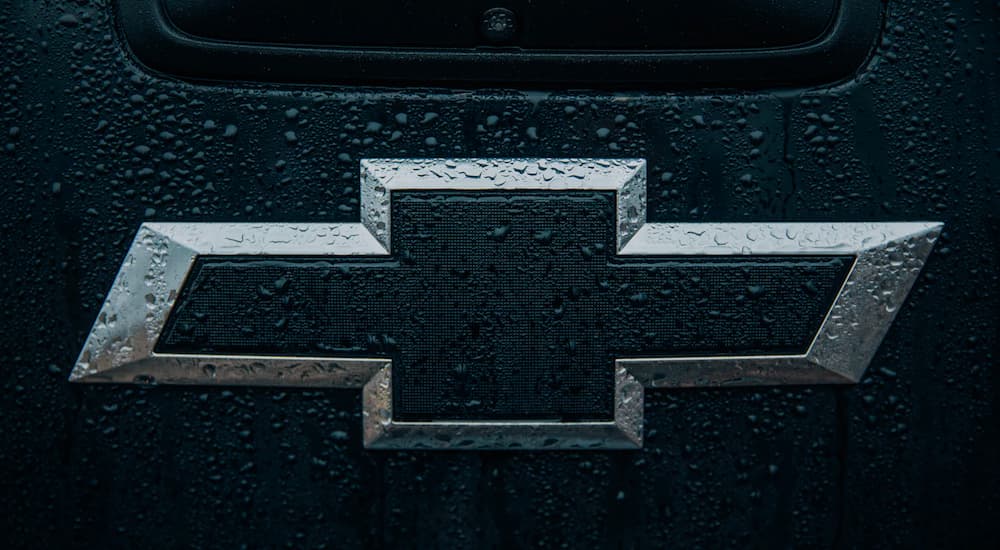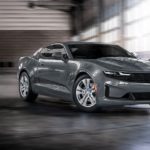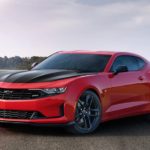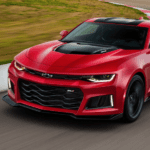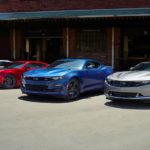For American drivers who want to get their thrills behind the wheel of a sporty little Chevy coupe but don’t have the budget to spring for the iconic Corvette (or are looking for something a little more practical for day-to-day driving), the Camaro has long been an attractive model. The Camaro can trace its roots all the way back to the 1960s and entered its sixth generation with its 2016 model year. But if you go to your local Chevrolet dealer next year wanting to buy a 2025 Camaro, it looks like you’re going to be out of luck.
Chevrolet has announced that the 2024 Camaro will be the last before the model is discontinued. Before you get too disappointed, we should let you know that the company’s statement does clarify that “this is not the final chapter for the nameplate.” But whatever comes next is almost certainly going to involve a more significant change than just a simple re-styling or a new powertrain. Otherwise, we would expect Chevy to simply announce the model’s seventh generation. Scott Bell, Vice President of Global Chevrolet, has said that the automaker is “not announcing an immediate successor today,” implying something more dramatic than a surface-level redesign is in the works.
Currently, we don’t have all the details about what lies ahead. But we can take a look at the Camaro’s past and present and see what hints Chevy has dropped about its potential future. Let’s dive in, remember the great times we’ve had with this pony car, and speculate about what might come next.
A Brief History of the Camaro
The Camaro burst onto the scene in September of 1966 and was an instant success, with over 220,000 examples sold in its first year. Since its first generation, the Camaro has been both a personal car for thrill-seekers and a staple of professional racing. The second generation, which lasted from 1970 to 1981, brought significant updates, like a wider body with a lower center of gravity that improved handling and driver control. This evolution continued into the third generation, with engineers optimizing the suspension system, steering, and chassis. Generation four, which ran from 1993 to 2002, took the Camaro into the new millennium with more powerful engine options and sleek, modern styling.
After the end of the fourth generation, there was a significant hiatus in the Camaro’s production. If you’re worried about the current news, rest assured that there has been a similar gap in the recent past before the Camaro re-emerged in 2010 for a fifth generation that paired modern technology with styling that paid homage to its heritage. This combo won over driving enthusiasts, and this generation sold over half a million cars between its debut and its final model year. For the 2016 model year, the sixth-generation Camaro debuted with a body that was both lighter and stronger, a wide array of useful tech features, and its highest levels of performance yet, resulting in the Camaro being named the 2016 MotorTrend Car of the Year, a fitting way for the nameplate to celebrate its 50th birthday.
The 2024 Model Year
Since we know the 2024 model will be the last of the current generation rather than the start of a new one, we don’t expect there to be many significant styling or powertrain changes. We can look to the 2023 model year to get an idea of what its stats will probably look like. The 2023 Camaro can deliver up to 650 hp and go from zero to sixty in a mere 3.5 seconds. Of course, with four powertrains to choose from, it’s possible to get a more accessible version with more humble performance figures. The Camaro is available as either a sleek coupe or a showy convertible and offers plenty of special performance and design packages that give drivers a chance to customize their pony car to their liking.
Speaking of packages, that’s the one change we definitely know is coming to the 2024 model, based on Chevy’s announcement of the sixth generation coming to an end. Enthusiasts looking to celebrate the legacy of the beloved nameplate will be able to get a Collector’s Edition version of the RS and SS trims, and it will also be available on a “limited number” of ZL1 Camaros. More information on the details is set to be released closer to the summer, but what we know so far is that it will pay homage to the early years of the Camaro and will have a special connection to the original code name of the car during its development: Panther.
What’s Next for the Nameplate?
Looking at the direction that the automotive industry as a whole is moving in lately, it seems almost inevitable that whatever’s next for the Camaro nameplate, electrification will be involved to some extent. While the 2023 Camaro doesn’t offer an electric or hybrid powertrain, we have already seen an EV Camaro in action. Back in 2018, Chevy introduced the eCOPO Camaro concept, an all-electric race car boasting over 700 hp and 600 lb-ft of torque. On top of that, the Corvette is getting a hybrid powertrain for the first time for its 2024 model year. The Corvette E-Ray produces a combined 655 hp and can go from zero to sixty in 2.5 seconds.
Beyond simply getting an electric motor, either alongside or in place of a gas-powered engine, the Camaro may also have a future as a brand rather than just a single model. This might mean that a few years from now, you could see a Camaro sedan or even a Camaro SUV alongside the traditional coupe and convertible body styles. This would be a bold move but not an unprecedented one. Instead of a crystal ball, we can turn our gaze to Ford’s Mustang Mach-E, which was released for the 2021 model year. The Mach-E blends the iconic Mustang’s styling with the body of a crossover SUV and runs on an all-electric powertrain.
While it may be sacrilegious in the eyes of purists, a Camaro SUV and perhaps even a Corvette SUV, both powered entirely by electricity, may well be what’s coming down the pike. Though we wouldn’t be surprised if the Camaro SUV were offered alongside something a bit more traditional, more in the vein of the eCOPO. The Camaro nameplate will likely encompass a range of body styles rather than shifting entirely from a sleek coupe to a spacious SUV.
The Future of Chevrolet Performance
At this point, the electrification of the auto industry is pretty much inevitable. While some may be dismayed by this idea, the stated goal of General Motors for a future with “zero crashes, zero emissions, zero congestion” doesn’t sound half bad to those who are dreaming of a future where technology is used for the betterment of the world. Looking at the eCOPO Camaro, the Corvette E-Ray, and other electric concepts from Chevrolet Performance, we can rest assured that this utopian vision still involves plenty of horsepower and torque. Wherever the Camaro nameplate is headed next, we expect that future generations will still see it as a signifier of massive power and sleek style for decades to come.
